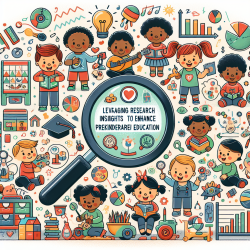Introduction: Bridging Trade and Therapy
In the realm of speech-language pathology, data-driven decisions are paramount. Just as bilateral free trade agreements (BFTAs) aim to enhance trade flows between nations, speech-language pathologists can leverage similar principles to optimize therapy outcomes for children. A recent study, "Have Bilateral Free Trade Agreements (BFTAs) been beneficial? Lessons learned from 11 U.S. BFTAs between 1992 and 2017," offers insights that can be adapted to our field.
Understanding BFTAs: A Framework for Collaboration
BFTAs are designed to reduce trade barriers and enhance economic cooperation between countries. The study utilized a gravity model to assess the impact of BFTAs on trade flows, revealing significant increases in trade volume for certain partners. This model can be metaphorically applied to speech-language pathology, where reducing barriers and fostering collaboration can lead to enhanced therapeutic outcomes.
Applying BFTA Principles to Speech-Language Pathology
Here are some key takeaways from the BFTA study that can be adapted to speech-language pathology:
- Data-Driven Decisions: Just as the study used Poisson pseudo-maximum likelihood (PPML) to analyze trade data, speech-language pathologists can employ data analytics to tailor interventions based on individual needs and outcomes.
- Collaborative Networks: BFTAs thrive on partnerships. Similarly, building strong networks among therapists, educators, and families can enhance the delivery of services and support for children.
- Barrier Reduction: BFTAs aim to eliminate trade barriers. In therapy, identifying and addressing barriers to communication can significantly improve a child's progress.
Encouraging Further Research and Application
The study's findings emphasize the importance of continuous assessment and adaptation. Speech-language pathologists are encouraged to engage in ongoing research and professional development to stay abreast of new methodologies and technologies that can improve therapy outcomes.
Conclusion: A Call to Action
By embracing the principles of BFTAs, speech-language pathologists can enhance their practice, leading to better outcomes for children. This approach not only aligns with data-driven decision-making but also fosters a collaborative environment that is essential for effective therapy.
To read the original research paper, please follow this link: Have Bilateral Free Trade Agreements (BFTAs) been beneficial? Lessons learned from 11 U.S. BFTAs between 1992 and 2017.










